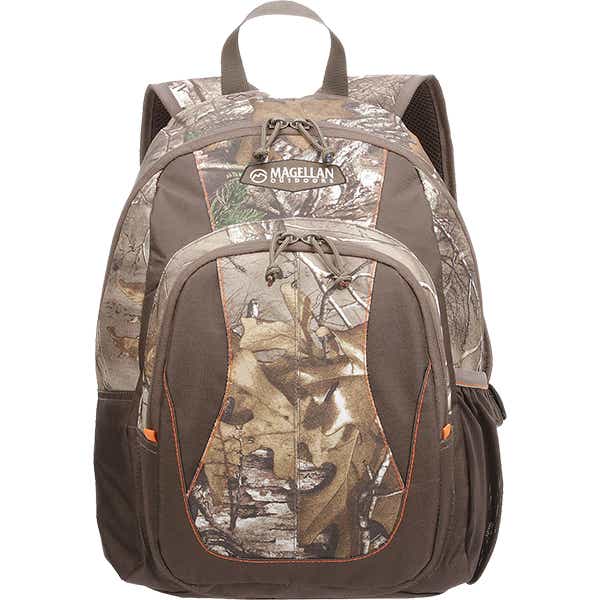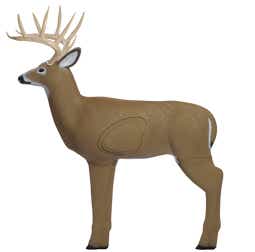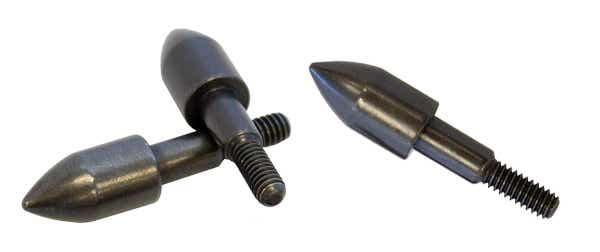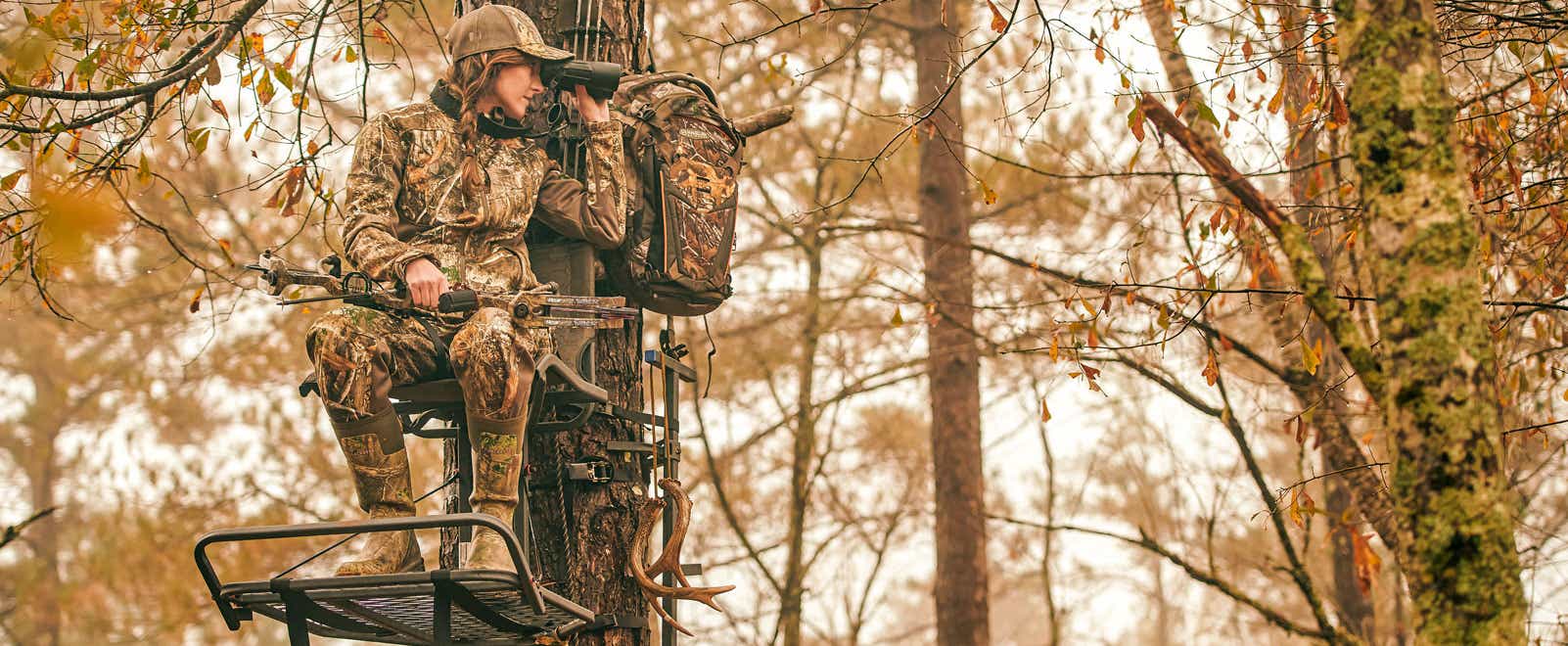Bow Hunting for Beginners: Tips, Gear & More

Bow Hunting is one of the most exciting and raw ways to catch your prey, but it does come with great responsibility. There are a few tips you should know before you take your first hunting trip. Professional hunter and BuckVentures co-host, Jeff Danker, shares his 12 best tips about bow hunting for beginners.
Beginner Bow Hunting Tips to Know
1. Tag Along with an Experienced Hunter
Before you hunt solo, learn in the field from a hunting vet. “If possible, go alongside an experienced bowhunter to help you your first few times,” Jeff says. “They have the tools and techniques for safe, effective hunting.”
2. Carry Hunting Licenses on You
State game officers and officials can request licenses, permits, and stamps at any time. With this in mind, we recommend the following to consider when packing your gear:
- Keep licenses and documents on you.
- Have a dedicated compartment, pocket, or license holder.
- Use a sealed plastic bag to waterproof documents before
tossing them in your hunting bag or pack.

3. Find the Right Bow
Bows are not one-size-fits-all. Your bow should suit your body according to:
- Draw length
- Draw weight
- Game
Expert Tip:
Check your bow’s fit – You should be able to hold the bow at target level, point at the target, and draw without much movement.
There are minimum weight limits for hunting bows, so find out what that limit is in your state. Jeff says, “I shoot a 70-pound bow, but in most states even a 40-pound hunting bow is legal to harvest elk.”
Additionally, choose the right game for your hunting bow. If you are only comfortable with a lighter bow, look for seasons for fowl or small mammals. Work your way up to bigger animals and heavier hunting bows.
4. Choose a Bow Release Style

There are two ways to release a bow: using traditional “shooting fingers” and mechanical releases. Traditional bows rely on your “shooting fingers” — which simply means that your fingers remain on the bowstring until you are ready to shoot.
Expert Tip:
Take aim. Be sure and still. Then relax your fingers so that the bowstring slides off them, releasing the arrow. “You have a trigger in your hand and when you’re ready to release, your index finger pulls the trigger. That makes it easier to make a smooth release,” Jeff says.
Mechanical bow release aids use a trigger to release the bowstring. Today, most bowhunters, — especially with a compound hunting bow or crossbow — use a mechanical release or release aid.
Releases increase accuracy. You hold them in your hand and attach the bowstring until it's triggered. You'll find it much easier to do! Beyond that, this method affords you more aiming time, so you can deliver a steadier shot.
Expert Tip:
Your fingers remain on the bowstring until you are ready to shoot. Take aim. Be sure and still. Then relax your fingers so that the bowstring slides off them, releasing the arrow.
5. Sight Your Bow In
“Move your sight to chase your arrow,” Jeff advises. Every new bowhunter needs to learn how to sight their bow in. This takes discipline and practice before hunting. You will need to adjust your sight to your own shooting.
How to sight your bow in: When shooting at a bullseye or target, look for patterns. For example, four arrows you shoot all land 4 inches right of the bullseye. Use that to adjust the sight. Move it up or sideways to compensate for your patterns. You will want to “chase” your arrow with sight adjustments until you can hit multiple bullseyes.

6. Change Arrow Points
The type of bow and arrows you use changes with the target. Practicing: Use field point arrowheads. Field points are shaped like small bullets. Do NOT use these for hunting. These are not only unethical and unsportsmanlike to hunt with, but illegal for large game. Field points are likely to pass right through an animal, which will cause little immediate damage. The wounded animal could survive for days, enduring an agonizing death.

7. Wear a Safety Harness
Stay safe from the moment you step off the ground until you come down. When hunting from a tree stand, wear a safety harness. If you are hunting with children, make sure they’re wearing properly sized safety gear.
8. Use a Bow Hanger
You cannot hold your bow the entire time you’re in a tree stand. Plan ahead and be prepared. Strategically screw a bow hanger in the tree for a safe, convenient place to rest your hunting bow. You could be there for hours waiting for the perfect moment.
9. Conceal
It’s tough not to spook an animal when you’re shooting from only 20 to 30 yards away. Gear up. Show as little skin as possible when donning hunting and camo clothing. Make sure you have gloves and face covering or a face paint kit.
Expert Tip:
Mask your odor. Use field spray and scent eliminators. A deer can smell you from 400 yards away. Consider adding scent-control hunting gear to your wardrobe. Add cover scents to pump up the concealment. And be careful to stay downwind. “If you don’t learn to play the wind, you won’t even see a deer,” Jeff says.
10. Know Where to Aim
“Aim small, miss small. That’s a phrase every new bowhunter needs to learn,” Jeff advises.
Choose a spot on the animal, where the vital organs are, and aim for it. If you shoot at the animal as a whole, you’re going to miss. This strategy can make or break a bowhunter.
11. Only Ethical Shots
“Aim small, miss small. That’s a phrase every new bowhunter needs to learn,” Jeff advises. Only take a shot when the animal is broadside, meaning sideways to you or angled slightly quartered away. This makes the sight area larger. Never aim for the head, neck or rear.
“Those are the two positions that give you the best opportunity to hit the animal’s vital organs (lungs and heart), which is an ethical shot. If you shoot two lungs, the deer is dead with no pain as soon as the arrow hits it. If the animal has turned toward you even a quarter, your opportunity to hit the vitals has shrunk.”
12. Don’t Rush In

Patience is the name of the game. After a successful shot, don’t chase down the animal right away. “You need to give it some time or you’ll push the animal to run away and you might never recover it.”
How much waiting time depends on the shot. Give the animal at least an hour, which should be enough for a double-lung shot. If you missed its lungs, you may need up to 12 hours, depending on where the animal was hit.
Have Fun Out There!
As Jeff Danker states, bow hunting is “so gratifying because it’s so difficult.” Not everyone is cut out for it, but with practice and discipline it is a true sportsman’s hunt! Find all your hunting essentials and accessories online and in-store at Academy Sports + Outdoors.


